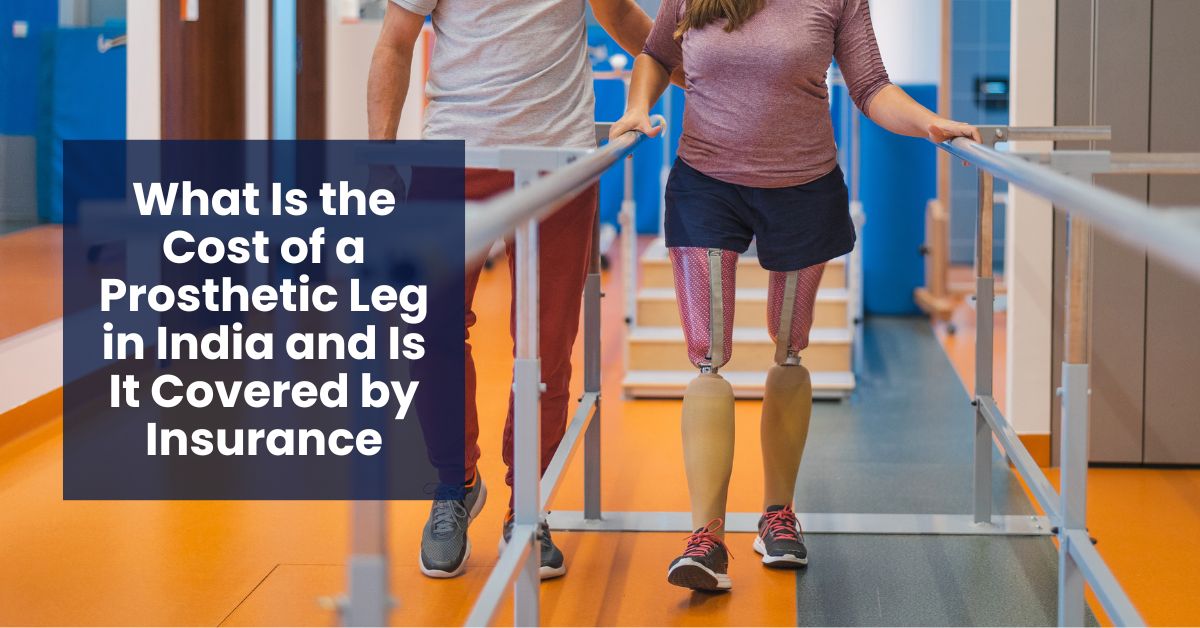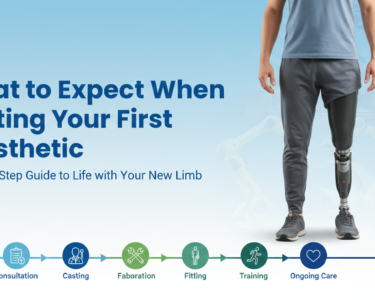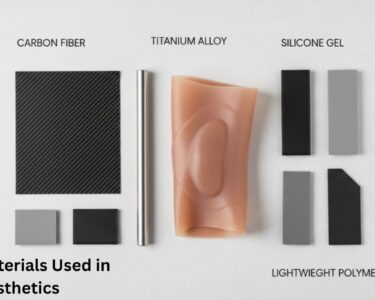Losing a leg is a life-changing experience. Whether it happened due to an accident, illness, or a congenital condition, the journey of recovery doesn’t end with healing—it continues with the challenge of learning to live and move again. One of the first thoughts many people have after an amputation is, “Can I walk again?” The answer is yes, and the tool that makes it possible is a prosthetic leg.
But along with hope, another concern quickly follows: “How much will it cost?”
In India, the cost of a prosthetic leg can vary widely based on the type of limb, the level of amputation, the materials used, and the technology involved. And once the cost is clear, the next question usually is: “Is it covered by insurance?”
Let’s explore both questions in a way that’s simple, straightforward, and useful for anyone going through this journey.
Understanding the Cost of a Prosthetic Leg in India
Prosthetic legs are designed to help people regain mobility and independence. But they are not “one-size-fits-all” products. Each person’s body, needs, and lifestyle are different. That’s why the price can differ depending on many factors.
If you’ve had an amputation below the knee, the prosthetic required is simpler and usually less expensive. If your amputation is above the knee, it means you also need an artificial knee joint, which adds to the complexity and cost.
The price range in India usually falls between:
- ₹50,000 to ₹1.5 lakhs for a basic below-knee prosthesis
- ₹1.5 lakhs to ₹5 lakhs for an above-knee prosthesis with a mechanical knee
- ₹5 lakhs to ₹15+ lakhs for advanced prosthetics with microprocessor-controlled knees or feet (bionic limbs)
Some well-known Indian prosthetic manufacturers like Proactive Technical Orthopaedics offer options across a wide price range, from basic functional models to advanced, highly customized systems.
You might wonder why some limbs cost much more than others. It’s usually because of technology. A basic prosthetic may help you walk short distances. But if you want to run, climb stairs, or have a job that involves movement, you may need a more responsive or advanced limb. These higher-end options are often lighter, more durable, and better at mimicking natural leg movement.
What Else Adds to the Total Cost?
Beyond the cost of the leg itself, there are other expenses to keep in mind:
- Initial fitting and consultation: The prosthetist will measure and fit the prosthetic to your unique stump size and body weight.
- Socket customization: This part connects your stump to the prosthesis and must fit perfectly for comfort and safety.
- Follow-up visits: Adjustments are often needed after your body adapts or swells.
- Rehabilitation and physiotherapy: Walking with a prosthesis requires practice and guided therapy.
- Replacement parts and wear and tear: Some parts need replacement over time, especially for active users.
Is It a One-Time Investment?
Not really. Most prosthetic limbs do not last a lifetime. Depending on your activity level and the quality of the materials, a prosthetic leg typically lasts between 3 to 5 years. After that, it may need to be replaced or refitted, especially if your weight or body condition changes. Children need replacements more often as they grow.
This means ongoing costs are part of life with a prosthesis. Planning ahead for those expenses is important.
Is the Cost Covered by Insurance in India?
This is the part where things can get confusing—and a bit frustrating.
In general, many health insurance plans in India do not automatically cover the full cost of a prosthetic limb. However, the good news is that some plans are beginning to offer partial coverage or reimbursement options under specific conditions.
Here’s how it usually works:
Government Schemes and Support
If you or your family is in a lower-income group, there are several government-run programs or NGCs supports free prosthetic limbs programs that can help:
- ADIP Scheme (Assistance to Disabled Persons for Purchase/Fitting of Aids and Appliances): Offers financial support for people with disabilities.
- Social Welfare Departments in different states may also provide help.
These are great options for people who qualify, but they may involve long waiting periods or require attending specific medical camps.
Private Health Insurance
Some newer or premium private health insurance policies may provide limited coverage for prosthetics. This could be:
- Covered under post-hospitalization rehabilitation expenses
- Included in daycare procedures or disability benefits
- Part of a rider or add-on to your main policy
However, most basic policies do not include prosthetic limbs, especially if the amputation is due to a pre-existing condition or accident that’s not covered.
Before assuming your insurance will cover it, it’s essential to read your policy carefully or speak to your insurance advisor. Always ask:
- Is a prosthetic leg covered under my plan?
- What percentage of the cost is reimbursable?
- Do I need to get treatment at a network hospital?
- What documents will I need to submit?
If insurance is not helpful, you can also explore crowdfunding platforms or NGO support, especially if the cost is too high for your family to manage alone.
Tips for Managing the Cost
Here are a few things to keep in mind while planning your prosthetic journey in India:
- Compare options from local prosthetic centers. Some offer packages that include consultation, fitting, and training.
- Ask for subsidies or discounts, especially from nonprofit organizations or government partners.
- Start with a basic model if your finances are tight, and upgrade later if needed.
- Document every expense if you’re planning to claim insurance reimbursement.
Some users also choose to use donated or second-hand prosthetic components temporarily, especially when waiting for a better model or saving up for a more advanced one.
Final Thoughts
Getting a prosthetic leg in India can feel overwhelming at first, especially when you start looking at prices and wondering if insurance will help. But the truth is, thousands of people successfully get fitted with prosthetics each year and go on to live active, fulfilling lives.
While the cost can vary from modest to very high, there are options for every budget—and help is often available if you know where to look. If you’re currently facing this journey, don’t hesitate to reach out to a prosthetist, hospital counselor, or even other amputees for advice.
Knowledge is power, and asking the right questions is the first step toward walking again—with strength, confidence, and independence.
Disclaimer:
The information provided in this article is for general awareness and educational purposes only. Costs, insurance coverage, and support schemes mentioned may vary based on location, provider, technology, and individual eligibility. Readers are advised to consult certified prosthetists, medical professionals, or insurance advisors for personalized advice and the most accurate, up-to-date details before making any healthcare decisions.








